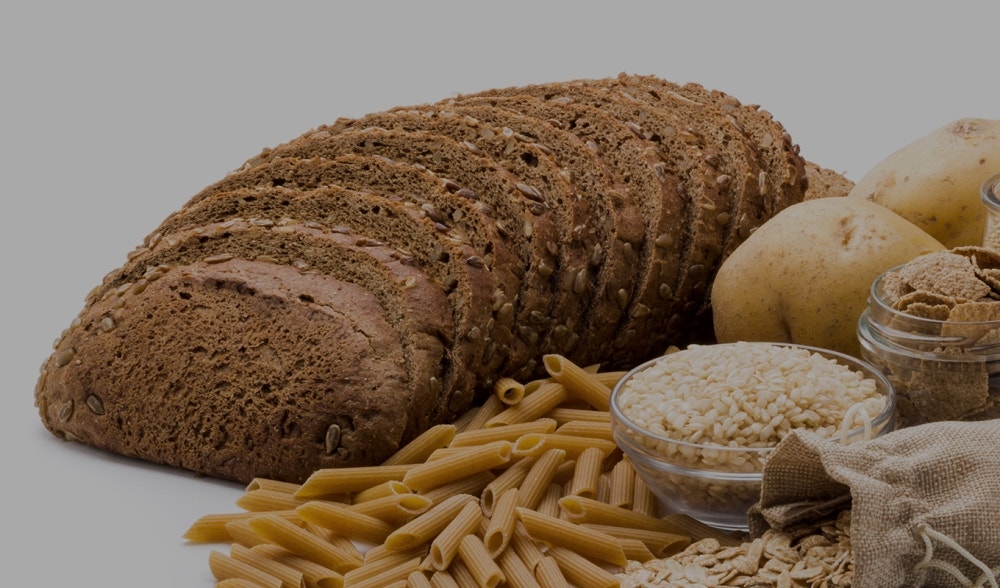Carbohydrates, also known as sugars, carbohydrates, saccharides or chemically hydrates of carbon, are among the most abundant organic molecules in nature and our body uses them as a primary source of energy. Let's find out together, during this study, which and how many carbohydrates an endurance athlete should take to optimize his performance and provide the body with the " right fuel ".
Body metabolisms and carbohydrate reserves
 Our body is able to accumulate glucose (the monosaccharide carbohydrate par excellence) in the form of glycogen , a real reserve typical of the liver and skeletal muscle, which the body uses to support metabolism.
Our body is able to accumulate glucose (the monosaccharide carbohydrate par excellence) in the form of glycogen , a real reserve typical of the liver and skeletal muscle, which the body uses to support metabolism.
This vital energy reserve is consumed primarily by the brain and skeletal muscle via a pathway called the aerobic pathway . When glucose is needed to perform activities, our body is able to draw on glycogen reserves to have energy that is ready to use.
Generally the body assumes a maximum of 1g of carbohydrates / kg of body weight / hour, and the rate of absorption of these carbohydrates depends on many factors such as gastric emptying, intestinal absorption, type of carbohydrate and digestion times. In the case of endurance sports, athletes mainly use the metabolic pathway called aerobic, which is activated with intense and prolonged exercise. Already after 1 hour of high intensity training, glycogen reserves tend to decrease by 55%, until they are completely exhausted when sports activity exceeds 2 hours. Per this (and many others) reason it is good to understand how many and which carbohydrates can support the endurance athlete during training and competitions.
Important parameters for the sportsman
Choosing the right carbohydrate for us is not easy at all. Parameters to be evaluated certainly are the frequency with which gastrointestinal discomfort occurs, individual tolerance and then glycemic index and dextrose equivalence. The glycemic index is important for optimal performance, the glycaemia must remain stable within certain ranges (as shown in the following table).
 Another parameter to consider is Dextrose Equivalence : it serves to define the level of hydrolysis or splitting of sugars derived from starches, assigning a value from 0 to 100 (where 0 = starch, therefore not split, and 100 = glucose, monosaccharide). Theoretically, the more a carbohydrate is broken down, the more the body will be able to use it quickly, but we must beware of the risk of intestinal cramps and dysentery, frequent when too much pure glucose is present (and therefore when the ED is too high).
Another parameter to consider is Dextrose Equivalence : it serves to define the level of hydrolysis or splitting of sugars derived from starches, assigning a value from 0 to 100 (where 0 = starch, therefore not split, and 100 = glucose, monosaccharide). Theoretically, the more a carbohydrate is broken down, the more the body will be able to use it quickly, but we must beware of the risk of intestinal cramps and dysentery, frequent when too much pure glucose is present (and therefore when the ED is too high).
How many carbohydrates?
As for the ideal quantities to be taken during an endurance performance, a premise must be made: when we talk about athletes, highly personalized nutrition is always the best choice. Both the type of carbohydrates and the quantities are closely linked to the characteristics of the athlete. We will therefore limit ourselves to reporting the guidelines for an endurance sportsman in the following table.
 Normally, if the performance is less than 75 minutes, it is not necessary to consume
Normally, if the performance is less than 75 minutes, it is not necessary to consume  carbohydrates during the activity: however, be careful to arrive at the race with optimal glycogen levels . In the everyday diet this can translate into 8-10g of carbohydrates / kg of body weight / day (for example, for an 82kg athlete, it is necessary to consume between 600 and 800g of carbohydrates per day).
carbohydrates during the activity: however, be careful to arrive at the race with optimal glycogen levels . In the everyday diet this can translate into 8-10g of carbohydrates / kg of body weight / day (for example, for an 82kg athlete, it is necessary to consume between 600 and 800g of carbohydrates per day).
What carbohydrates?
After understanding how many carbohydrates are needed to sustain endurance activities, let's try to understand which ones are able to optimize the results. First, let's understand how to choose them based on the timing of physical activity:
- FIRST it is useful to take medium / low GI carbohydrates;
- DURING it is essential that carbohydrates are medium / high GI, so that the body is able to use them easily and blood sugar is kept constant (without the risk of glycemic crashes);
- AFTER we can choose carbohydrates with a high GI if in the immediate post-workout, to move on to carbohydrates with a medium-low GI if consumption occurs in the following hours.
To choose instead the ideal carbohydrate to be taken for performance, it is necessary to report the characteristics of the best known:
- Dextrose à is the most common simple sugar. It has a high GI and is used by the body immediately. However, we must be very careful because large quantities can cause gastro-intestinal disorders.
- Fructose is especially useful if consumed in carbohydrate mixtures because it uses different transporters from those of glucose, it does not raise blood sugar but if in excess it is stored in the form of fatty acids, leading to the "fatty liver".
- Isomaltulose , also known by the trade name of Palatinose, is a disaccharide that does not affect blood sugar despite providing fast energy to the athlete. It is by far the carbohydrate of choice for prolonged activities, allows you to maintain focus and does not cause digestive problems.
- Maltodextrin is widely used in cycling and running, these sugar chains ensure rapid gastric emptying and digestion. However, they have a high GI and can cause nausea and diarrhea. They can be used in the post race to restore the body's stocks.
- Highly branched cyclodextrins à cyclic oligosaccharides, are the natural "evolution" of maltodextrins. Thanks to the cyclic structure they are easily soluble in water, have a low GI and allow rapid gastric emptying, while not causing unwanted effects. They are suitable for pre, during or even post-activity consumption.
Conclusions
Carbohydrates are indispensable , we understand this. And not only for the energy function, but also for hydration: as the name implies, or " carbon hydrates ", carbohydrates also provide water molecules. Which to choose? Surely for an endurance athlete it is good to prefer “new generation” carbohydrates , such as isomaltulose or cyclodextrins . Attention also to the quantities: if our glycogen stocks are optimal, surely the performance will be too.
Bibliography
Hawley JA, Schabort EJ, Noakes TD, Dennis SC. Carbohydrate-loading and exercise performance. An update. Sports Med. 1997 Aug;24(2):73-81. doi: 10.2165/00007256-199724020-00001. PMID: 9291549.
Aragon AA, Schoenfeld BJ. Nutrient timing revisited: is there a post-exercise anabolic window? J Int Soc Sports Nutr. 2013 Jan 29;10(1):5. doi: 10.1186/1550-2783-10-5. PMID: 23360586; PMCID: PMC3577439.
Robergs RA, Pearson DR, Costill DL, Fink WJ, Pascoe DD, Benedict MA, Lambert CP, Zachweija JJ. Muscle glycogenolysis during differing intensities of weight-resistance exercise. J Appl Physiol (1985). 1991 Apr;70(4):1700-6. doi: 10.1152/jappl.1991.70.4.1700. PMID: 2055849.
Takii H, Ishihara K, Kometani T, Okada S, Fushiki T. Enhancement of swimming endurance in mice by highly branched cyclic dextrin. Biosci Biotechnol Biochem. 1999 Dec;63(12):2045-52. doi: 10.1271/bbb.63.2045. PMID: 10664836.
Furuyashiki T, Tanimoto H, Yokoyama Y, Kitaura Y, Kuriki T, Shimomura Y. Effects of ingesting highly branched cyclic dextrin during endurance exercise on rating of perceived exertion and blood components associated with energy metabolism. Biosci Biotechnol Biochem. 2014;78(12):2117-9. doi: 10.1080/09168451.2014.943654. Epub 2014 Jul 31. PMID: 25080121.
Kayaci F, Ertas Y, Uyar T. Enhanced thermal stability of eugenol by cyclodextrin inclusion complex encapsulated in electrospun polymeric nanofibers. J Agric Food Chem. 2013 Aug 28;61(34):8156-65. doi: 10.1021/jf402923c. Epub 2013 Aug 15. PMID: 23898890.
Burke, Deakin (2010). Clinical Sports Nutrition. McGraw-Hill Australia Pty Ltd



Comments
Write a comment about the article